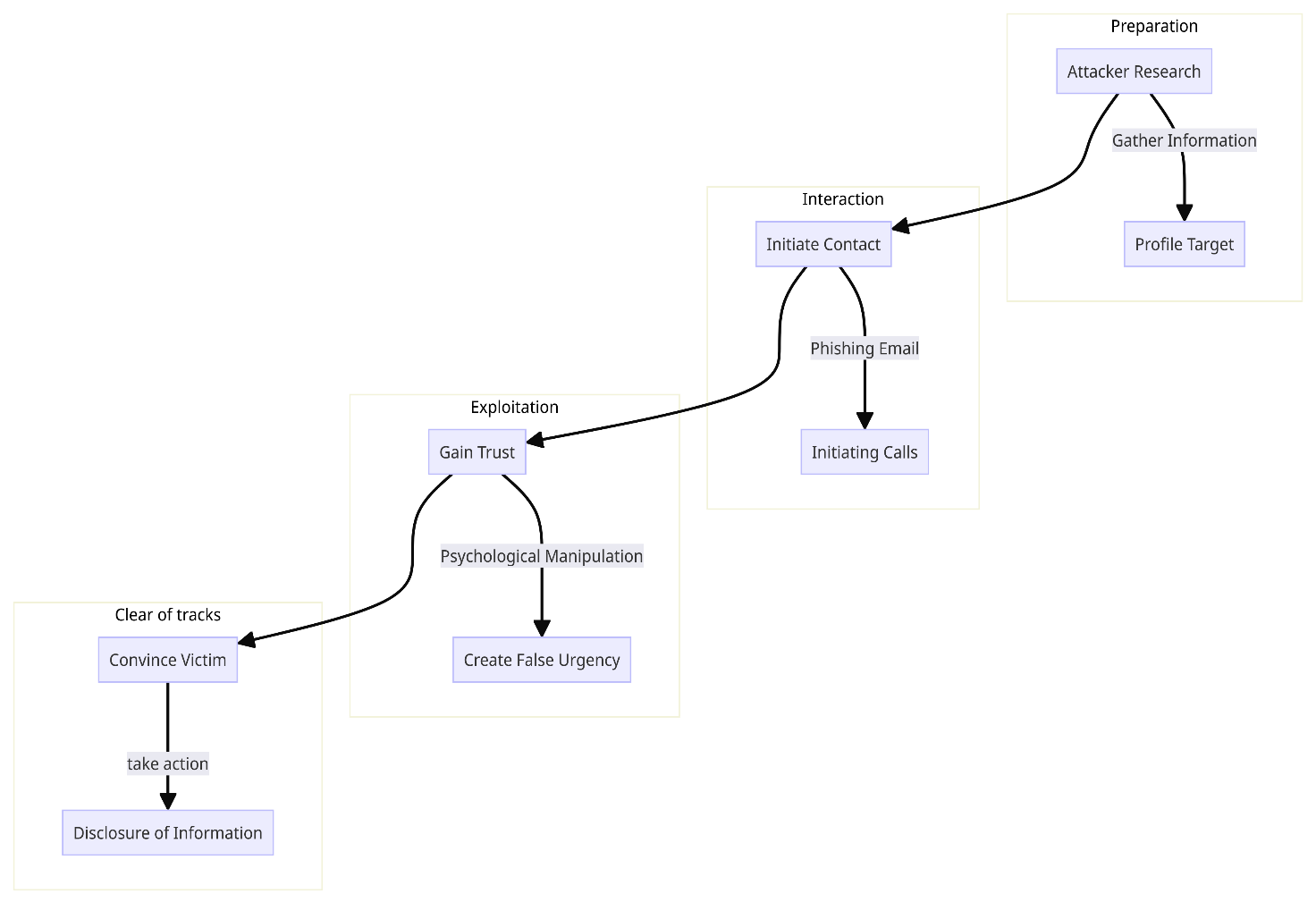By: Pinaki Sahu, International Center for AI and Cyber Security Research and Innovations (CCRI), Asia University, Taiwan, 0000pinaki1234.kv@gmail.com
Abstract
In this era of cybersecurity, the effect of social engineering attacks is becoming a concern, exploiting human psychology to breach organizational defenses. On the other hand, a chatbot assistant is armed with natural language processing and machine learning capabilities. In this article we will discuss how chatbot assistance can revolutionize social engineering attack detection and enhancing security by alerting, integrating with systems, and facilitating user training, ultimately fostering trust within organizations. As cyber threats evolve, chatbot assistants stand as crucial allies in safeguarding sensitive information and preserving integrity.
Introduction
Social engineering attacks are one of the most insidious hazards organisations face in the world of cybersecurity. These manipulative techniques infiltrate the human mind to deceive individuals into sharing sensitive information or carrying out actions that could compromise security. Identifying and preventing social engineering attacks is a continuous challenge, but chatbots are emerging as a helpful tool in this effort. We will explore how chatbot assistants are transforming the landscape of social engineering attack detection.
Understanding Social Engineering Attacks
Social engineering is a crafty and manipulative strategy used by evil persons to get sensitive information such as passwords, addresses, and bank account information by exploiting human vulnerabilities[1]. Social engineering attacks come in various forms, including phishing, pretexting, baiting, and tailgating. They all share a common goal: exploiting human trust and manipulating individuals to divulge confidential information, such as login credentials, financial data, or sensitive company information. There are four phases in social engineering attacks which are:
1.Preparation: During this phase, assailants conduct extensive research to learn about their target’s routines, interests, and vulnerabilities. They may construct a profile of the victim using publicly accessible information and social media[1].
2.Interaction: Attackers make their move armed with the information gathered during the preparatory phase. This may include sending a fraudulent email, making a deceptive phone call, or initiating contact via other channels[1].
3.Exploitation : Attackers use psychological manipulation to obtain the victim’s trust once contact has been established. This could involve creating a deceptive sense of urgency or impersonating a trusted individual[1].
4. Clear of tracks: In the final phase, the attacker convinces the victim to perform a particular action, such as revealing sensitive information, clicking on a malicious link, or transferring funds[1].

The role of Chatbot Assistants
Chatbot assistants, equipped with advanced natural language processing and machine learning capabilities, have the potential to revolutionize social engineering attack detection. Here’s how they are making a difference:
1. Natural Language Analysis: Chatbots excel at analysing and interpreting communication language. They are able to identify suspicious phrases, requests for sensitive information, and unusual user behaviour that may indicate an ongoing attack. [2].
2. Real-Time Interaction Monitoring: These assistants actively monitor both internal company messaging systems and external communication channels in order to identify possible risks as they appear[2].
3. User Behaviour Analysis: By analysing typical user behaviour, word selection, and communication patterns, chatbots are able to generate user profiles. Abnormalities from these patterns may generate alerts for further investigation[2].
4. Report and Response Mechanisms: Chatbot assistants enable the reporting of suspicious messages and interactions. When a user reports a potential threat the chatbot can immediately flag the information for further investigation.[2].
While the primary purpose of chatbot assistants is to detect and prevent social engineering attacks, they also play an important role in enhancing overall security and fostering a culture of trust in organizations:
1. Alerting: Chatbots can send real-time alerts to security teams or employees when suspicious behaviour is detected, allowing them to take rapid action to mitigate potential threats.
2. Integration of security systems: Security systems such as firewalls and intrusion detection tools can be seamlessly integrated to strengthen the organization’s overall security posture.
3. User training: Chatbots can provide ongoing training for employees on how to recognize and combat social technology attacks, helping to create a more security-oriented workforce
4. Feedback loops: These features can collect data on attacks and attempted attacks, enabling organizations to continuously improve their security plans and response strategies.
Conclusion
In the realm of cybersecurity, social engineering attacks remain an important concern. In the fight against these oppressive tactics, chatbots have proven to be strong allies. Using their natural language processing, real-time analytics, and educational outreach capabilities, these chatbots enhance an organization’s ability to identify and prevent sociotechnical attacks. In doing so, they not only strengthen security but also promote a culture of trust in which employees are empowered to protect you from fraudulent schemes. As the threat landscape evolves, chatbot assistants may play a larger role in the ongoing fight to safeguard sensitive data and preserve organizational integrity.
Reference
- Sahu P. (2023) Analyzing Techniques of Social Engineering Attacks in Emotional Factors and finding their Recovering Strategies, Cyber Security Insights Magazine, Insights2Techinfo, Volume 2, pp. 1-6.
- Yoo, J., & Cho, Y. (2022). ICSA: Intelligent chatbot security assistant using Text-CNN and multi-phase real-time defense against SNS phishing attacks. Expert Systems with Applications, 207, 117893.
- Poonia, V., Goyal, M. K., Gupta, B. B., Gupta, A. K., Jha, S., & Das, J. (2021). Drought occurrence in different river basins of India and blockchain technology based framework for disaster management. Journal of Cleaner Production, 312, 127737.
- Gupta, B. B., & Sheng, Q. Z. (Eds.). (2019). Machine learning for computer and cyber security: principle, algorithms, and practices. CRC Press.
- Singh, A., & Gupta, B. B. (2022). Distributed denial-of-service (DDoS) attacks and defense mechanisms in various web-enabled computing platforms: issues, challenges, and future research directions. International Journal on Semantic Web and Information Systems (IJSWIS), 18(1), 1-43.
- Almomani, A., Alauthman, M., Shatnawi, M. T., Alweshah, M., Alrosan, A., Alomoush, W., & Gupta, B. B. (2022). Phishing website detection with semantic features based on machine learning classifiers: a comparative study. International Journal on Semantic Web and Information Systems (IJSWIS), 18(1), 1-24.
Cite As
Sahu P. (2023) How Chatbot Assistants Can Enhance Social Engineering Attack Detection?nsights2Techinfo, pp.1